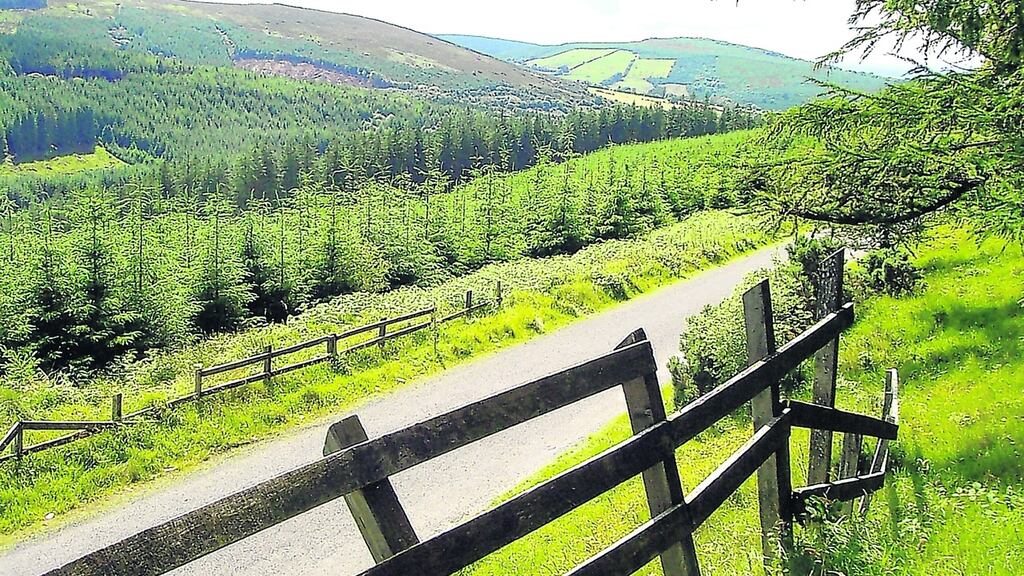In past times, it seems, people rarely ventured into the Slieve Bloom Mountains. No heroic myths or tales of epic battles emanate from here. No great burial cairns adorn the highest summits. No Kevin or Finbarr chanced this way to found a monastic settlement. Insufficient silver or gold existed to ignite a mining boom. We can surmise, therefore, that for most of human history the area remained a pristine wilderness; a lonesome realm of wolves and elks. And this remains one of the main attractions of exploring the Blooms today: the sense of traversing an unspoiled outback.
Seeking my own outback experience, I set out from Monicknew by following arrows for the Slieve Bloom Way. A green lane conveyed me upwards through mixed woodlands above the Glen River to a forest clearing where I crossed its exuberant headwaters. Often over-forested, the Blooms have sometimes had me looking despairingly heavenwards from claustrophobic, dense conifers and miming Oscar Wilde "that little tent of blue which prisoners call the sky". Not here though, for crossing the southern shoulder of Baunreaghcong Mountain I feel a real sense of spaciousness with big skies above and green hills around.
Horse-racing aficionados might describe the going as “yielding” on the dogleg track conveying me up Clarnahinch Mountain, but at least it leads to the unmistakable protuberance of the Stony Man. Probably the best known landmark in the Blooms, this perfectly symmetrical cairn was built as a marker when quarrying was an important industry in the area.
The Ridge of Capard now beckons north-eastwards along its heather cloaked crest. Coming to a boardwalk, it's downhill through a gate and soon after I come upon the lachrymose remains of an abandoned cottage that once was the Clear family homestead. The harshness of past life here is recalled by local man, Tom Joyce, in his book Bladhma when he recounts that in the big freeze of 1947, snow reached the eves of this cottage and neighbours had to rescue the family by digging them out.
A gravel track now leads to the bank of the infant River Barrow which, according to local mythology, rises in "the Well of Slieve Bloom" on Barna Mountain. If anyone dares to touch or even gaze upon these nascent waters, the well will immediately overflow to inundate the lands below. Those living beneath will, doubtless, be relieved to learn that nobody in modern times has managed to pinpoint this fabled fountain.
Following the Barrow downstream brings me past the remains of a mill to a footbridge leading across the river to Tinnahinch. Initially, I follow the riverbank before ascending through mixed woodland to arrive at a forest roadway. The way is west here with occasional tantalising vistas opening over the patchwork quilt of Ireland’s central lowlands until I reach a boardwalk giving access to an area maintained as a blanket bog reserve. Beyond is a public road, where – clever clogs that I am – I have pre-positioned my auto. Driving away I conclude the eastern Blooms are for those who enjoy a long but not over-challenging backcountry outing offering a genuine sense of escape.
WALKS: Slieve Blooms, Co Laois
Start: from Mountrath follow the signs for the Slieve Bloom Mountains and then Clonaslee. Park at Monicknew Carpark.
Time: 4.5 hours. Allow an extra hour if you must walk the quiet public road back to Monicknew.
Suitability: a mostly unchallenging circuit offering much walker friendly terrain but including some tedious moorland, so wear boots. The route is fully waymarked with walking arrows for the Slieve Bloom Way.
Map: Discovery Sheet 54.









